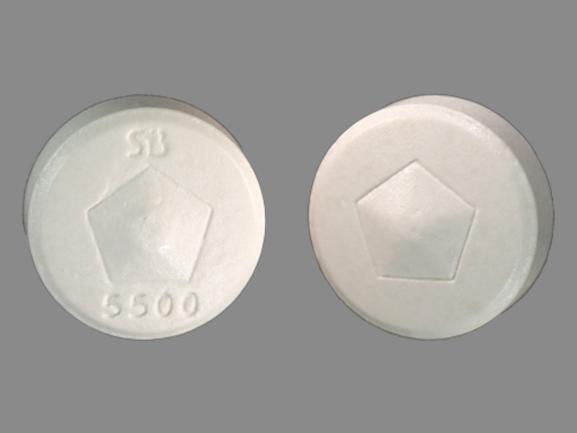Albenza Side Effects
Generic name: albendazole
Medically reviewed by Drugs.com. Last updated on Jul 17, 2023.
Note: This document contains side effect information about albendazole. Some dosage forms listed on this page may not apply to the brand name Albenza.
Applies to albendazole: oral tablet.
Serious side effects of Albenza
Along with its needed effects, albendazole (the active ingredient contained in Albenza) may cause some unwanted effects. Although not all of these side effects may occur, if they do occur they may need medical attention.
Check with your doctor immediately if any of the following side effects occur while taking albendazole:
Less common
- Fever
Rare
- Black, tarry stools
- bleeding gums
- blood in the urine or stools
- chest pain
- chills
- cough
- painful or difficult urination
- pinpoint red spots on the skin
- sore throat
- sores, ulcers, or white spots on the lips or in the mouth
- swollen glands
- unusual bleeding or bruising
- unusual tiredness or weakness
Incidence not known
- Blistering, peeling, or loosening of the skin
- blurred vision
- dark urine
- diarrhea
- general feeling of tiredness or weakness
- headache
- itching
- joint or muscle pain
- light-colored stools
- red, irritated eyes
- seizures
- stomach pain, continuing
- tightness in the chest
- vomiting
- yellow eyes or skin
Other side effects of Albenza
Some side effects of albendazole may occur that usually do not need medical attention. These side effects may go away during treatment as your body adjusts to the medicine. Also, your health care professional may be able to tell you about ways to prevent or reduce some of these side effects.
Check with your health care professional if any of the following side effects continue or are bothersome or if you have any questions about them:
More common
- Stomach pain
Less common
- Nausea
Rare
- Dizziness
- thinning or loss of the hair
Incidence not known
- Lack or loss of strength
For Healthcare Professionals
Applies to albendazole: compounding powder, oral tablet, oral tablet chewable.
General
Side effects differed between hydatid disease and neurocysticercosis. Symptoms were generally mild and resolved without treatment. Therapy was discontinued primarily due to leukopenia (0.7%) or hepatic abnormalities (3.8% in hydatid disease).[Ref]
Hepatic
Very common (10% or more): Elevated liver enzymes (up to 16%)
Uncommon (0.1% to 1%): Hepatitis
Frequency not reported: Hepatotoxicity, hepatic abnormalities, jaundice, hepatocellular damage
Postmarketing reports: Acute liver failure[Ref]
Mild to moderate elevated liver enzymes were very common.
Severe hepatic abnormalities, including jaundice and hepatocellular damage (possibly irreversible), have been reported during prolonged higher dose treatment of hydatid disease.
Elevated liver enzymes and hepatitis have also been reported during postmarketing experience.[Ref]
Nervous system
Very common (10% or more): Headache (up to 11%)
Common (1% to 10%): Raised intracranial pressure, dizziness, neurological events
Uncommon (0.1% to 1%): Vertigo, meningeal signs
Postmarketing reports: Somnolence, convulsion[Ref]
Headache has also been reported during postmarketing experience.[Ref]
Gastrointestinal
Upper GI symptoms (e.g., epigastric/abdominal pain, nausea, vomiting) and GI disturbances (abdominal pain, nausea, vomiting) were reported.
Diarrhea has also been reported during postmarketing experience.[Ref]
Common (1% to 10%): Epigastric/abdominal pain, nausea, vomiting, upper gastrointestinal (GI) symptoms, GI disturbances
Uncommon (0.1% to 1%): Diarrhea
Rare (less than 0.1%): Pancreatitis[Ref]
Dermatologic
Common (1% to 10%): Reversible alopecia (thinning of hair, moderate hair loss)
Uncommon (0.1% to 1%): Itchiness, skin rashes
Postmarketing reports: Erythema multiforme, Stevens-Johnson syndrome[Ref]
Reversible alopecia (thinning of hair and moderate hair loss) has also been reported during postmarketing experience.[Ref]
Other
Fever has also been reported during postmarketing experience.[Ref]
Common (1% to 10%): Fever, hyperpyrexia
Postmarketing reports: Asthenia[Ref]
Hematologic
Agranulocytosis and pancytopenia have also been reported during postmarketing experience.
Patients with liver disease (including hepatic echinococcosis) appeared more susceptible to bone marrow suppression.[Ref]
Common (1% to 10%): Leukopenia
Rare (less than 0.1%): Low red cell count, pancytopenia, thrombocytopenia
Frequency not reported: Granulocytopenia, agranulocytosis
Postmarketing reports: Aplastic anemia, bone marrow suppression, neutropenia[Ref]
Hypersensitivity
Uncommon (0.1% to 1%): Hypersensitivity reactions (including rash, pruritus, urticaria)[Ref]
Ocular
Rare (less than 0.1%): Ocular maculopathy
Frequency not reported: Retinal damage
Postmarketing reports: Blurred vision[Ref]
Musculoskeletal
Rare (less than 0.1%): Bone pain
Postmarketing reports: Rhabdomyolysis[Ref]
Genitourinary
Rare (less than 0.1%): Proteinuria
Renal
Postmarketing reports: Acute renal failure[Ref]
Frequently asked questions
- Pinworm Infection (Enterobius vermicularis) - how long does albenza take to work?
- What are Zentel 400mg used for?
- Albendazole: How long does it take to kill all the pinworms?
More about Albenza (albendazole)
- Check interactions
- Compare alternatives
- Pricing & coupons
- Reviews (3)
- Drug images
- Side effects
- Dosage information
- During pregnancy
- Drug class: anthelmintics
- Breastfeeding
- En español
Patient resources
Professional resources
Related treatment guides
References
1. Product Information. Albenza (albendazole). SmithKline Beecham. 2001;PROD.
2. Cerner Multum, Inc. Australian Product Information.
Further information
Always consult your healthcare provider to ensure the information displayed on this page applies to your personal circumstances.
Some side effects may not be reported. You may report them to the FDA.

